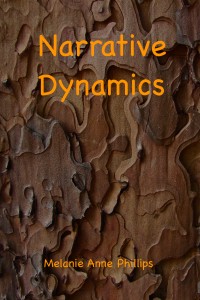Excerpted from the book, Narrative Dynamics
The Narrative Circuit
If you are familiar with deep Dramatica theory, you know that all the output of the Story Engine is not made available in the Dramatica software. In fact, the Story Engine generates quite a bit more information about a story’s structure than it makes available to a user. What information, and why suppress it? I’ll answer the second question first.
We suppressed information that was so detailed and dramatically “tiny” that it was beyond the scope or magnification in which authors work. And, even if someone wanted to work with structure to that microscopic micromanaged level, that information had such little impact that it would almost certainly be lost in the background noise of the storytelling. In other words, the granularity of that suppressed information was smaller than the resolution of an audience’s understanding. In short – it would be lost in the translation from structure to finished story. So, to keep from overcomplicating the story structuring process and having the author do work that would never have a practical impact, we decided this kind of material should not be provided by the Story Engine.
Still, just because authors can’t really apply this suppressed information in a useful manner doesn’t mean the information isn’t accurate, especially when using the Story Engine for psychological analysis rather than just for fictional constructs. So, here’s a brief description of this information, shared here for the purpose of illustrating the limits of the current structural model at its farthest edges, and then being able to further describe what the developing dynamic model can bring to the table.
What is suppressed: PRCO and 1234. What the hell does that mean? PRCO stands for Potential, Resistance, Current and Outcome (or Power). 1234 is the sequential order in which the four items in a quad will come into play. You see this last part in the sequence of the Signposts and Journeys for each of the four throughlines in Dramatica, but the engine only shows you the output for the “type” level or plot level of a story’s structure – the equivalent of the topics each act will cover in each of the four throughlines. It is suppressed for all the other levels and all the other quads. (Though some additional sequential information is also available in the Plot Sequence Report in Dramatica.)
In truth, EVERY quad in the structure appears in every story structure, but some, like the Signposts, are the focus of the story. And yet, if you watch a story unfold, you’ll see that EVERY SINGLE QUAD in a completely structured story will unfold in a predictable sequential manner. As a side note, the manner in which we discovered this is an intriguing story I may write about someday, but for the purposes of this article, suffice it to say that every quad in a structure at every level will have a 1234 sequence attached to it, and those sequences will differ from one storyform to another.
But what about the PRCO? Well, consider ever quad as a little dramatic circuit – not a static thing except in the sense that an electronic circuit is static – a battery, a resistor, a light bulb and some wire – but the electrons flow through it and the bulb generates light. Similarly, in a dramatic circuit – a quad – the four items will act as Potential, Resistance, Current and Outcome (Power) and form a flow that moves one moment into the next and generates energy that sparks the next scene or sequence or act.
Now I could go into great detail about how all this works (it is built into the Story Engine after all) – BUT, that’s not the point. All you need to know for this article is that in the process of “winding up” the dramatic potential of the story at large, the model is (conceptually) twisted and turned like a Rubik’s cube so that quads are misaligned in a way that creates the tension that drives the story forward. Or, in terms of psychology, it describes the conflicting forces that are at work in the mind.
And so, every item in every quad will be assigned a 1234 and also a PRCO. This means that sometimes a scene will begin with a Potential and other scenes will open with a Resistance or Current or Power. In other words, 1234 and PRCO are independently assigned because they are not tied together psychologically, nor in terms of fiction.
Back to the dynamic model. The structural model can only tell you if something is a potential or resistance and the order in which it will come into play. But, only a dynamic model could tell you how MUCH potential or resistance was present and how long its span of time in the sequence will last: its duration. Plus, the dynamic model could tell you how the intensity of that potential might be changing and how fast it is changing and whether that speed of change is accelerating.
Stepping back then, it is pretty easy to see the usefulness of this both in charting the collective dramatic intensity of an unfolding story upon an audience’s head and heart, and also the manner in which motivations and decisions, effort and activities reach a flash point or recede in real world individual and group psychology.
Read Narrative Dynamics








You must be logged in to post a comment.